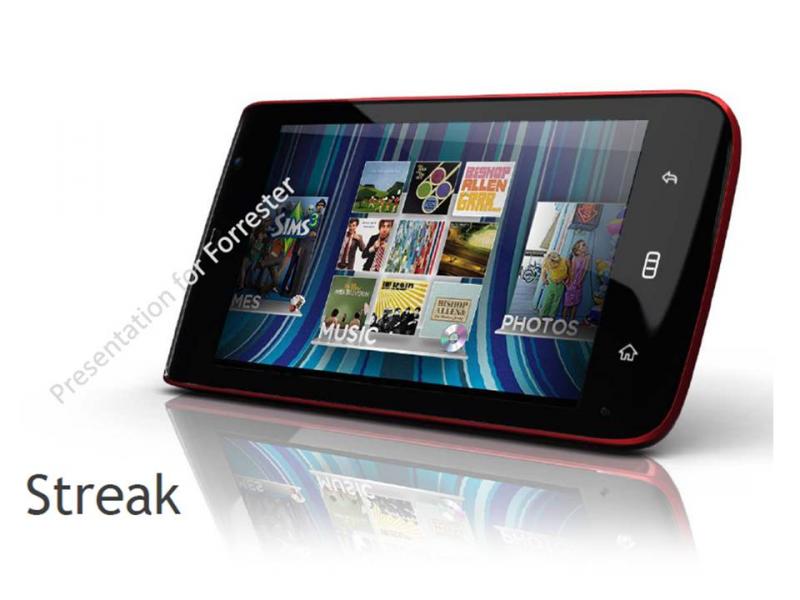The Collaboration Device – Dell Streak Fits New Category
The Dell Streak launches this morning in the UK at O2 and Carphone Warehouse. Dell calls the Streak a 5” tablet – I see a slightly larger touchscreen smartphone that I hope will be ideal for collaboration tasks. While I have not performed a hands-on test, I did talk with Neeraj Choubey, general manager of tablets in Dell's Communications Solutions Group.
What does the Streak have? A 5” screen displays navigation, browser, and social networking. In addition to connectivity via Wi-Fi, 3G, and Bluetooth, the Streak boasts two cameras – a 5 megapixel camera on the back for taking pictures with the dual LED flash and a backward-facing VGA camera for videoconferencing. All this runs on Qualcomm's Snapdragon chipset and Google Android operating system.

In today’s mobile world, information workers attend one or more meetings every day, and almost a third of their team members are not collocated with them (Ted Schadler writes about this in his report, “A Day In The Life Of A US Information Worker”). They are also out of the office more and more frequently – more than a third of information workers are out of the office regularly. This calls for solutions and devices that enable these mobile workers to communicate and collaborate – and the Streak fits nicely into market whitespace to fill this need.
This device is important because it is small enough to carry, yet large enough to see video and other digital media, and it has the hardware features to support collaboration via “unified conferencing” – i.e., any combination of Web, audio, and videoconferencing. When Cisco announced its intention to acquire Tandberg last year, I predicted that the conferencing market would change – moving toward a seamless single user experience for unified conferencing as they brought together WebEx, Meeting Place and Tandberg (even Telepresence) solutions (which I wrote about in my report, “Cisco Continues Its March On Collaboration Strategy”). Dell is also stating that this device works better with other devices (e.g., PCs), enabling it to be a communications and collaboration device that works in concert with apps running on a desktop or laptop PC. I have long been a proponent of more “glass” for communications applications and tasks, and this device just might be a good way to deliver that.
Other device and solution vendors should sit up and take notice – this is a device that has some hardware tuned for collaboration (forward- and backward-facing cameras like some of Nokia’s high-end devices), is large enough to have basic collaboration sessions on the screen (although, at 5”, it may not be big enough for some power users), and it is small enough to carry everywhere. I believe there will be significant advances in this collaboration device category over the next year, and I’m hoping to find one I can carry and easily use in my 150,000-airline-mile, 60-hotel-room nights/year, work/life schedule.
How do you collaborate when you are unable to meet face-to-face and are away from your PC?